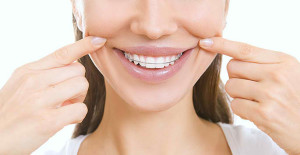Most of us think that retainers and dental braces are the same. Apparently, they are not. Primarily because retainers don’t just correct uneven or crowded teeth; in fact, they solve further oral difficulties, including sleep apnea.
Retainers work with an orthodontic dental treatment plan. This treatment is retainer therapy. Retainer therapy involves a myriad of trusted dental appliances. The best type of retainer you can use depends on your condition and the kind of treatment you are looking for. Since this therapy doesn’t require surgical procedures, majority of the dental appliances to use are removable. These removable appliances are easy to wear, remove, clean and then wear again.
Basically, retainer therapy takes place after you finish wearing your dental braces. This aftercare therapy allows your teeth, jawbone and soft tissues to settle in their new position. As a result, you still get to enjoy straight teeth even after wearing braces.
This treatment today involves and uses different healing materials. These dental devices are:
Orthodontic retainers are the most common and popular technique in retainer therapy. These retainers basically are suitable for those who have done wearing dental braces. Orthodontic retainers are uncomfortable to wear, at first. Eventually, the minor discomfort will go away. If not, you need to see your orthodontist or an emergency dentist in Brooklyn right now for appropriate adjustments.
Sleep disorder devices are also common factors that complete the retainer therapy. This dental appliance doesn’t just resolve sleep apnea, but heavy snoring, too. According to experts, sleep apnea is a very serious sleeping problem that usually takes place if your soft tissues collapses or closes. This results in a blockage of your airway. Aside from reducing the potential risks of sleep apnea, sleep disorder devices may also used for solving bruxism and TMJ.
Clear aligners also are popular alternative in retainer therapy. These invisible aligners are custom-made that can block and prevent dental culprits, like food particles and dental plaques, from penetrating. Clear aligners, like Invisalign, can help you solve mild spacing problems. These aligners are suitable only for adults and are not fit for kids and those who have non-permanent teeth.
Mandibular advancement devices are therapeutic materials for your lower jaw. These devices perfectly fit over your upper and lower teeth which help your lower jaw to move forward and be on its perfect place.
There’s only one person that specialize in retainer therapy and that’s professional orthodontist. If you have questions, consult a credible orthodontist now.
